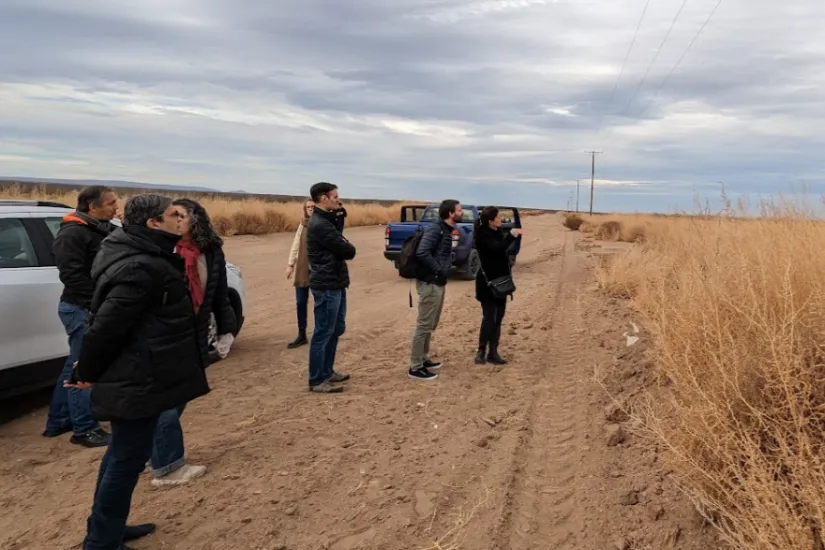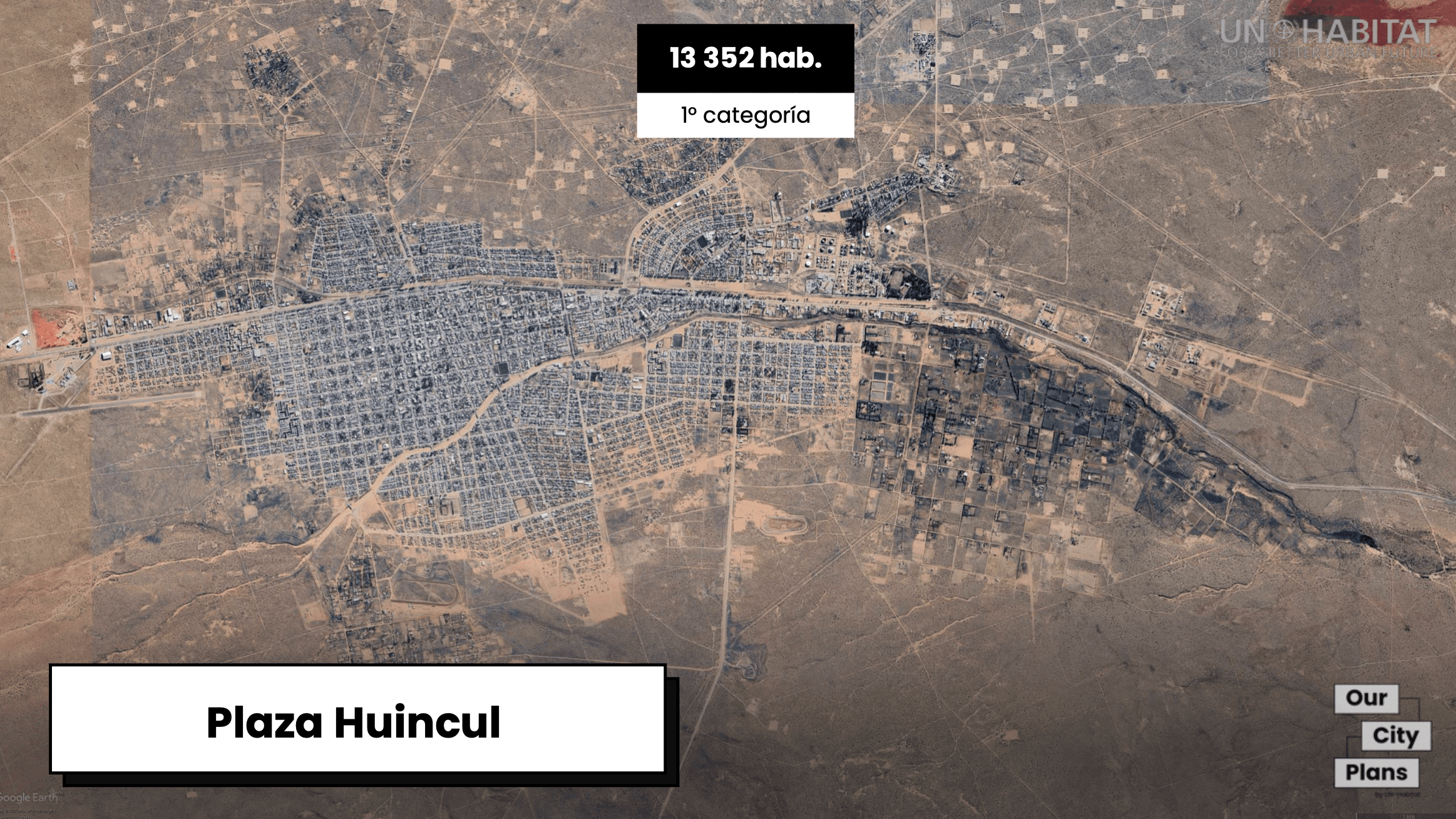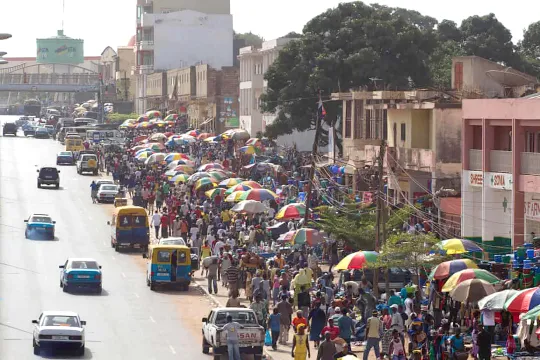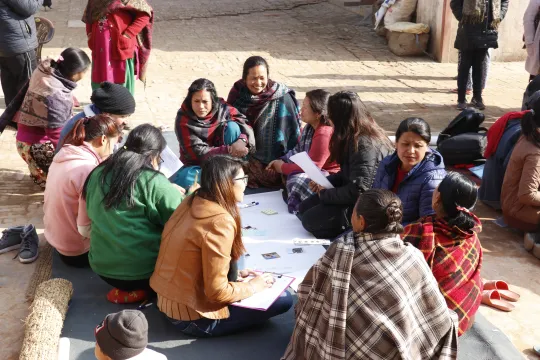
Introduction
UN-Habitat developed the project "Development of sustainable and resilient cities and communities in Neuquen Argentine Province", together with the Secretariat of Planning and Action for Development (COPADE) of the Government of the Province of Neuquén and financed by the Federal Investment Council of the Argentine Republic (CFI). The project included different products elaborated in collaboration with the United Nations Office for Project Services (UNOPS) and UN Women.
UN-Habitat focused on products related to capacity building, public space, and the development of four urban development plans using Our City Plans methodology for the municipalities of Las Lajas, Plaza Huincul, El Huecú and Aluminé. These aimed to guide local governments in their urban planning processes, using a participatory, inclusive and flexible methodology, aligned with the principles of sustainable development, thus promoting a better quality of life for their inhabitants.

Context and background
The province of Neuquen is located in the northeast of Patagonia region, and has 726, 590 inhabitants. Plaza Huincul belongs to the Confluencia department, where Neuquen Capital is located, and in the East Microregion. It is located in the route of the South Transatlantic Train. Along with Cutral Co, the adjacent municipality, it is on the productive axis of the province and entails a logistics park that will orient its development. The area also develops hydrocarbon activity of oil and gas and includes one of the largest petroleum refineries in the country, "El Mangrullo".
Plan and process using Our City Plans
Plaza Huincul Municipal Plan used Our City Plans toolbox and methodology for the development of the urban planning processes, adapted to the context and needs of the city. The Plan includes a Strategic Development Plan, with spatial strategies for the city development. In the case of Plaza Huincul (in contrast to El Huecu, Las Lajas, and Alumine) a participatory process was not developed due to the municipality electoral processes. The methodology was adapted to develop a Plan from the technical perspective and with the input of the municipal team. Activities included 4 missions in territory, 7 activities with municipal officials and more than 50 participants.
Plaza Huincul Municipal Plan followed the first two phases of Our City Plans (Assessment and Planning), specifically Blocks A (Contextualisation), B (Project Preparation), and D (Analysis & Diagnostic) from the Assessment phase, and E (Strategic Development and Spatial Plan) from the Planning phase.
In terms of the structure of the plan
- Chapter 1: Contextual Framework, develops an analysis of all the regulatory and urban development guidelines and instruments applied to the Municipality, reviewing the global, national, provincial and municipal scales in order to understand the planning framework in which this plan is developed.
- Chapter 2: Analysis, is organised in four areas: environmental, socio-economic, connectivity and mobility, and urban, using spatial and statistical analysis methods.
- Chapter 3: Current Territorial Model (Diagnostic), includes the main findings and conclusions of the analysis, spatialising the challenges and opportunities that are presented in Las Lajas and that will guide the guidelines of urban development.
- Chapter 4: Desired Model (Spatialization of the Strategic Vision), includes the territorial and planning strategies, organized in four territorial systems: environment, economic-productive, connectivity and mobility, and urban.
- Chapter 5: Next Steps, details the recommendations for the implementation of the Plan, guided by Our City Plans toolbox.

